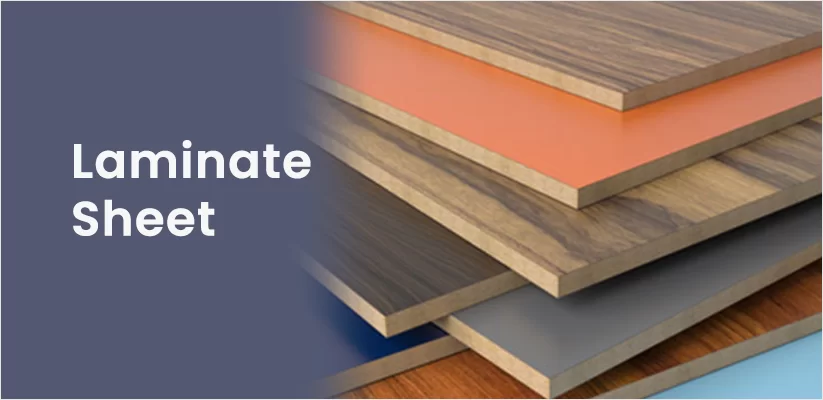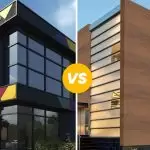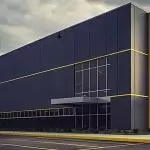Step into a world where creativity knows no boundary and style finds its perfect canvas. Laminate sheets, the true artisans of the interior design realm, have captured the hearts of DIY enthusiasts and professionals alike. In this captivating journey, we unveil the magic of laminate sheets, where ordinary surfaces transform into captivating works of art. Get ready to explore the artistry of endless possibilities as we delve into the captivating realm of laminate sheets.
Post your Requirement
What is a laminate sheet?
Laminate sheet refers to a type of composite material composed of multiple layers that are bonded together under heat and pressure. The primary purpose of these sheets is to provide a durable and decorative surface for various applications. Typically, the core layers are made of resin-impregnated paper or other materials, while the top layer is a decorative sheet printed with various patterns or designs.
The sheets that are hard in nature and mainly used over wooden furniture for giving an attractive look are known as laminate sheets. There are ample advantages to using this type of sheet because they are water resistant. Apart from this, any type of scratches can be easily removed from such sheets. The standard sheet measures about 8 feet x 4 feet and they have a thickness that varies from 0.6 mm to 1.5 mm. In fact, furniture gets a different look once the sheets are covered over it. However, there may be slight variations in the size. The most common laminate sheet types are:
Types of Laminate Sheets
-
High-Pressure Laminate (HPL):
Composed of multiple layers of resin-soaked Kraft paper, a decorative layer, and a protective overlay. HPL is known for its exceptional durability, resistance to scratches, heat, and chemicals, and is available in a wide range of patterns and colors.
-
Low-Pressure Laminate (LPL):
Consists of a single layer of decorative paper fused with resin-impregnated core layers. While less durable than HPL, LPL offers cost-effective options with an array of designs and textures.
-
Wood laminate:
Resembles the natural beauty of wood and can be used for flooring, cabinetry, and decorative purposes. It provides a cost-effective alternative to real wood while being easier to maintain.
Enquire Now for Laminate Sheets
Suggested Post: What is the laminating process?
Manufacturing Process of Laminate Sheets
The manufacturing process for laminate sheets involves the following steps:
-
Preparation of Layers:
The core layers, typically made of Kraft paper or other materials, are impregnated with phenolic resin. The decorative layer, which is printed paper with various patterns, is also treated with melamine resin.
-
Layer Stacking:
The layers are stacked in the desired sequence, with the decorative layer on top of the core layers.
-
Pressing:
The stacked layers are placed in a press machine, where heat and pressure are applied. The resins in the layers react and bond together, creating a solid composite.
-
Trimming and Finishing:
After pressing, the laminate sheets are trimmed to the desired size and undergo additional finishing processes like sanding and cleaning.
Applications of Laminate Sheets
Laminate sheets find extensive use in a variety of applications, including:
-
Kitchen Countertops:
HPL laminate sheets are a popular choice for kitchen countertops due to their durability and resistance to stains and heat.
-
Flooring:
Laminate sheets mimic the appearance of hardwood, stone, or tile flooring, providing a cost-effective and easy-to-maintain alternative.
-
Wall Coverings:
Laminate sheets can be used to create accent walls, wainscoting, or decorative wall panels, adding style and texture to interior spaces.
-
Furniture:
Laminate sheets are used to refurbish furniture surfaces, transforming old pieces into stylish and modern items.
-
Commercial Spaces:
From retail displays to office furniture, laminate sheets offer versatility and durability for commercial applications.
Enquire Now for Plywood
Related Post: High-Pressure Laminate vs. Low-Pressure Laminate/Melamine?
Advantages of Laminate Sheets
-
Affordability:
Laminate sheets provide cost-effective alternatives to natural materials like wood, stone, or ceramic.
-
Versatility:
With an extensive range of patterns, colors, and textures, laminate sheets suit various design aesthetics and applications.
-
Durability:
High-pressure laminate sheets are highly resistant to scratches, heat, moisture, and chemicals, ensuring long-lasting performance.
-
Ease of Maintenance:
Laminate sheets are easy to clean, requiring only basic care to maintain their appearance.
-
DIY-Friendly:
Laminate sheets are relatively easy to install, making them accessible to DIY enthusiasts.
Also Read Post: What is meant by laminated particle Board?
A Complete Overview of Laminate Sheets
The sheet that is formed by the bonding of two papers is mainly termed as a laminate sheet. The papers used are brown paper and sometimes kraft paper. Both the sheets are then soaked in melamine and then allowed to dry up under the sun. This type of sheet is mainly abrasion resistance so it is widely accepted. The price involved in manufacturing a sheet is much lower than the other ones. It has also been mentioned that there are various types of laminate sheets.
This is the only reason why most of the furniture shops mainly rely on to use this type of sheets over table tops and other segments of furniture. They are applied by using glue. Once applied it is hardly tough to remove or tear the sheet.
The industries manufacturing this type of sheets get bulk orders from various hotels, corporate offices and other organizations. Although glass tops are mostly seen in many places still the laminate sheets have not lost their importance. There are some advanced machines used during the manufacturing process of sheets.
These are drying and cooling machines, hydraulic press, cutting machines, sanding machines, and steel plates. Without the involvement of this type of device, it is hardly impossible to manufacture a beautiful laminate sheet. The people manufacturing such sheets undergo good training for handling the device safely.
Conclusion
Laminate sheets are a revolutionary material that combines style, durability, and affordability. With various types available, including high-pressure laminate, low-pressure laminate, and wood laminate, these versatile sheets can be used in kitchen countertops, flooring, wall coverings, furniture, and commercial spaces. The manufacturing process involves layering and pressing resin-impregnated papers, resulting in a strong composite material. Laminate sheets offer advantages such as affordability, versatility, durability, and easy maintenance, making them an excellent choice for transforming and enhancing interior spaces with style and practicality.























Post A Comment